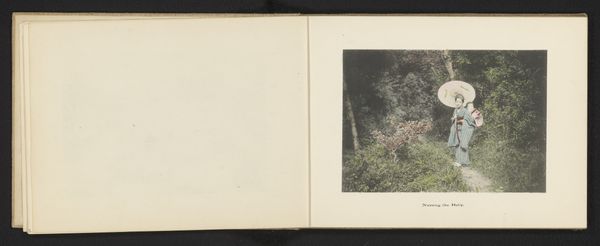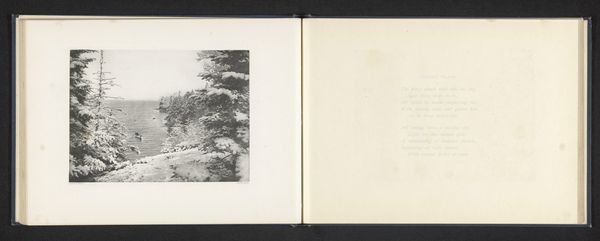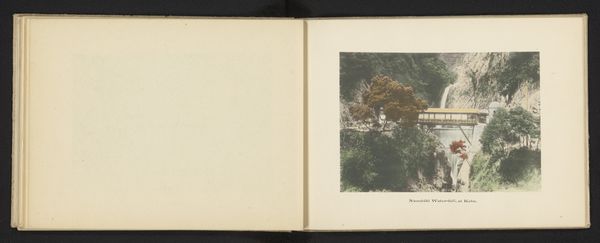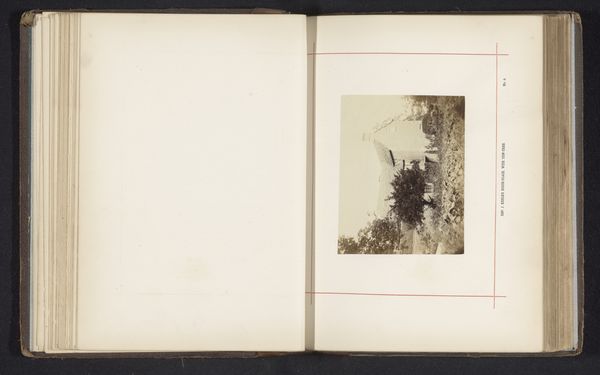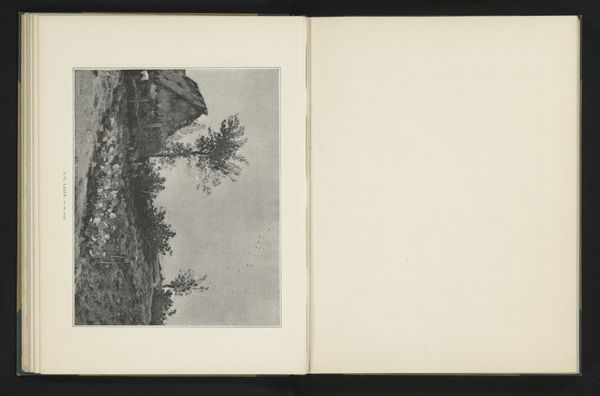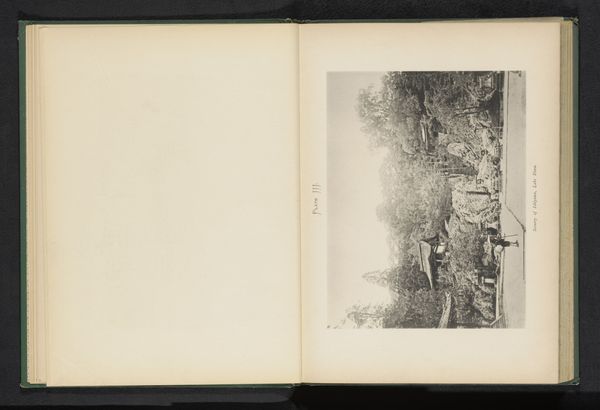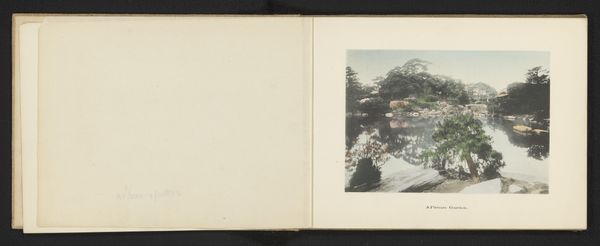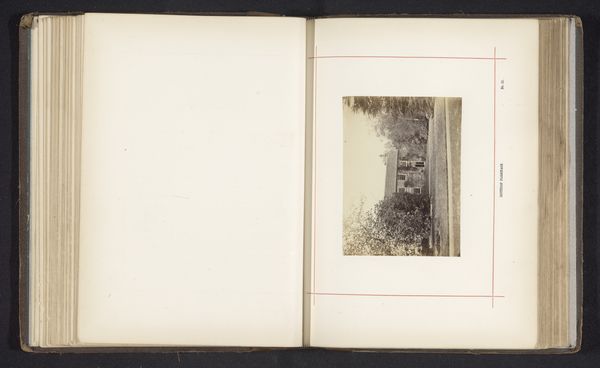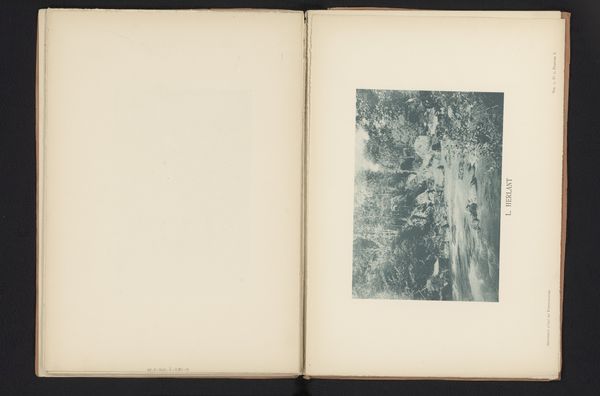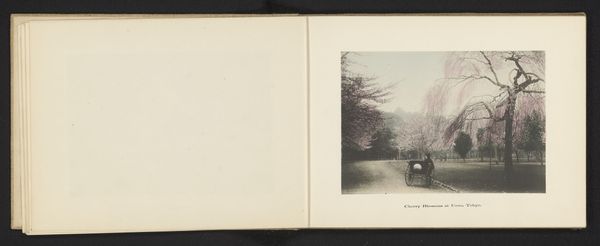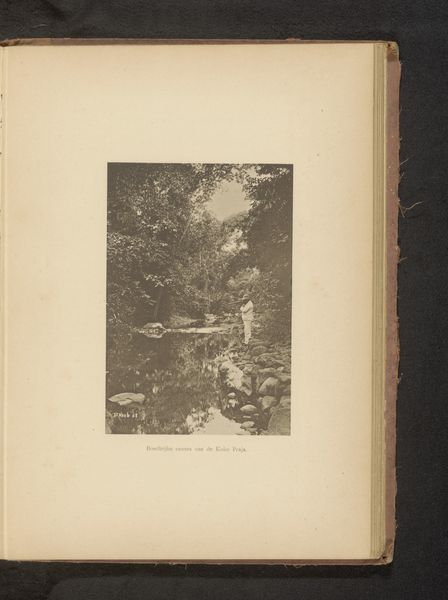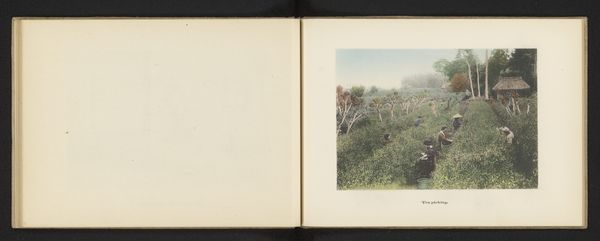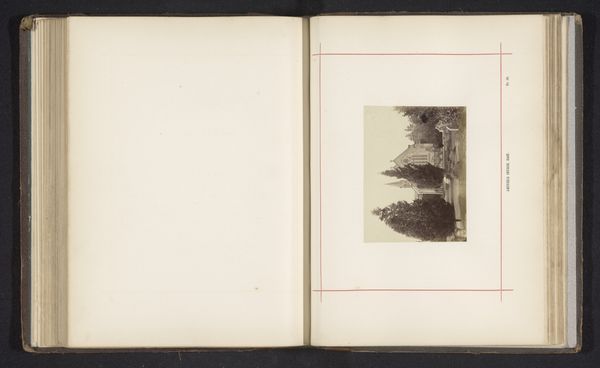
Gezicht op een brug omringd door bomen in de wijk Takinogawa in Tokyo c. 1895 - 1905
0:00
0:00
photography
#
landscape
#
photography
Dimensions: height 105 mm, width 151 mm
Copyright: Rijks Museum: Open Domain
Curator: I'm struck by the contemplative stillness of this image, a print attributed to Kōzaburō Tamamura, circa 1895-1905. It’s called "Gezicht op een brug omringd door bomen in de wijk Takinogawa in Tokyo." The water is so calm; it invites reflection. Editor: The very essence of Japonisme seems embedded in its presentation. What appears at first to be a purely aesthetic pursuit in representing the scene betrays an underlying engagement with socio-political dialogues of cultural exchange. Curator: The composition, though, is remarkably balanced. The bridge cuts across the horizontal center, creating distinct planes, while the surrounding trees form a dynamic frame with vertical thrust. The reflections in the water also echo that structured geometry, dissolving and abstracting what’s above. Editor: It would be interesting to examine the actual location of the bridge, to compare it as a place of passage as intended by city planning, versus the symbolic potential ascribed by photographic rendering. How does that bridge become, not just a crossing, but a mediator between cultures when the image enters circulation? Curator: True, and the choice of the print medium amplifies the visual experience, don't you think? The subtle tones and soft textures almost lend it the appearance of a painting. Editor: Precisely. The integration of photography with the established art of Japanese woodblock printing tradition highlights a transitional phase. Photography provided a modern means to document culture while continuing, almost obsessiveliy, to celebrate Japanese identity. Curator: The blurring of lines also echoes, in itself, this sense of bridging disparate concepts and approaches to image-making at the turn of the century. It's a very evocative synthesis. Editor: A point well observed. This work asks us to look closely at how artistic expressions carry, deliberately or inadvertently, narratives of cultural identity and artistic interchange during periods of modernization. Curator: Exactly, there's so much to be gained by observing what’s intrinsic and then stepping back to observe wider, layered historical contexts, right? Editor: Indeed, the conversation allows a complete unveiling, from the bridge's surface texture to its cultural crossing—all within a singular framed instance.
Comments
No comments
Be the first to comment and join the conversation on the ultimate creative platform.
